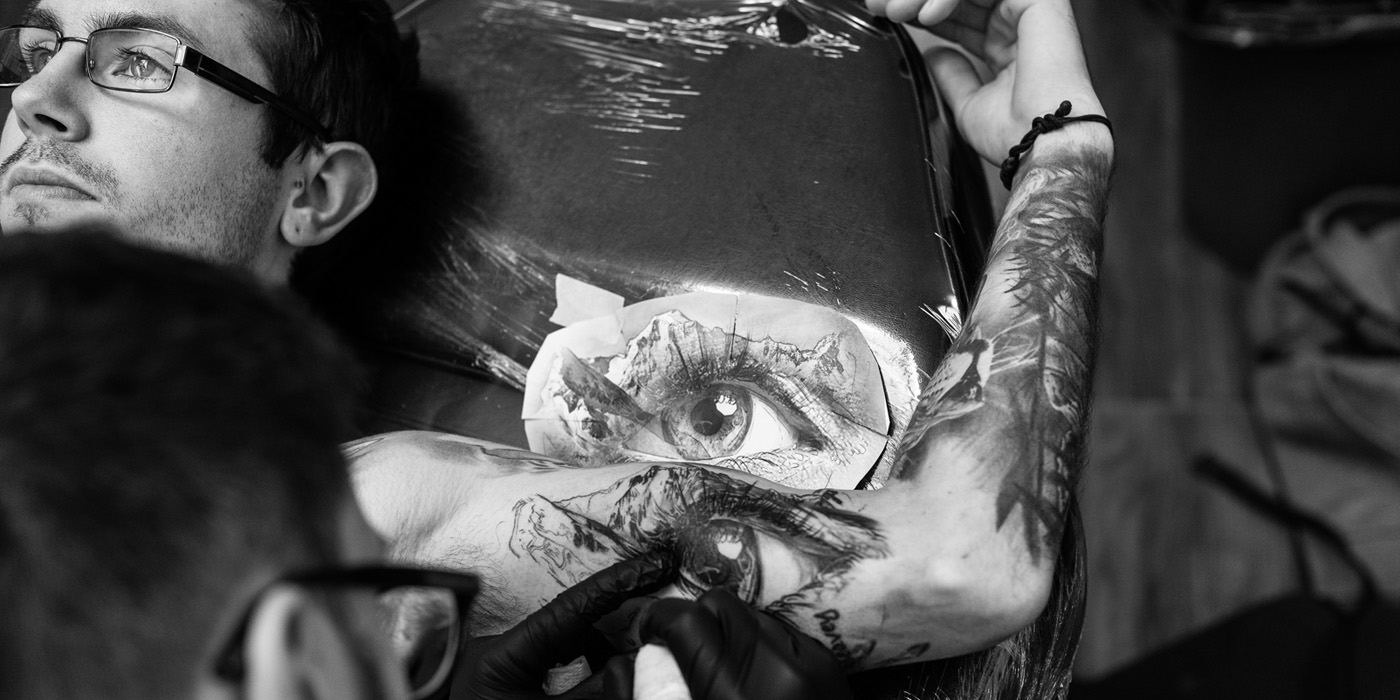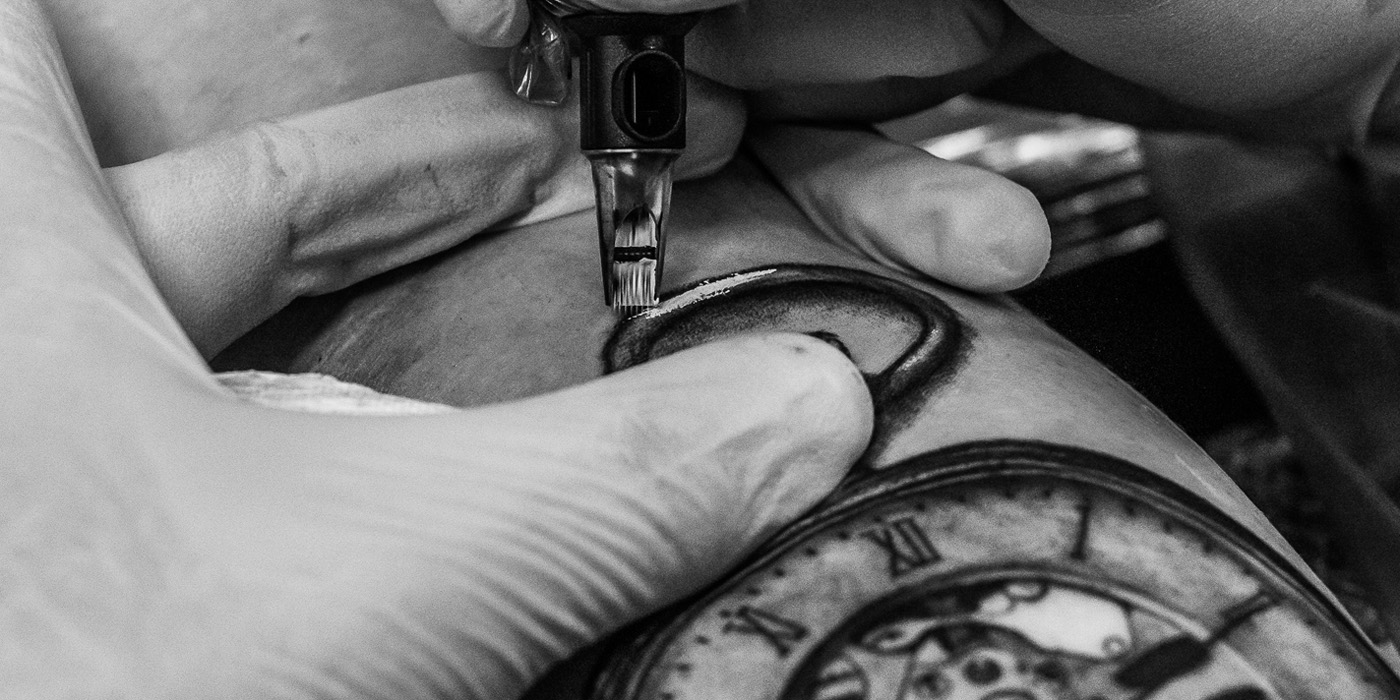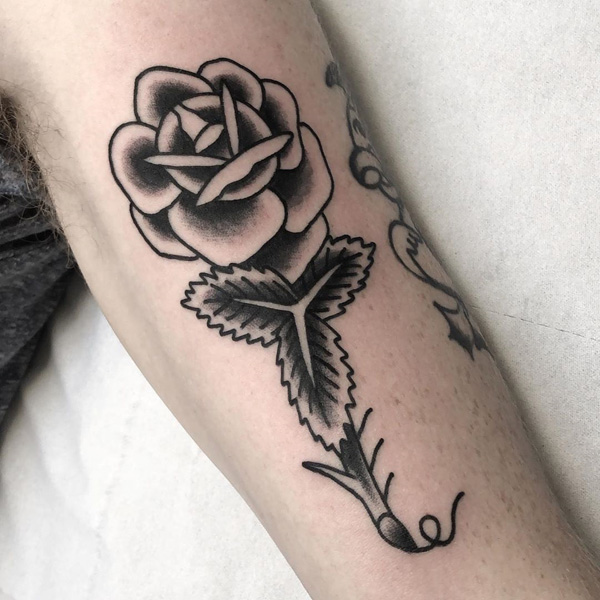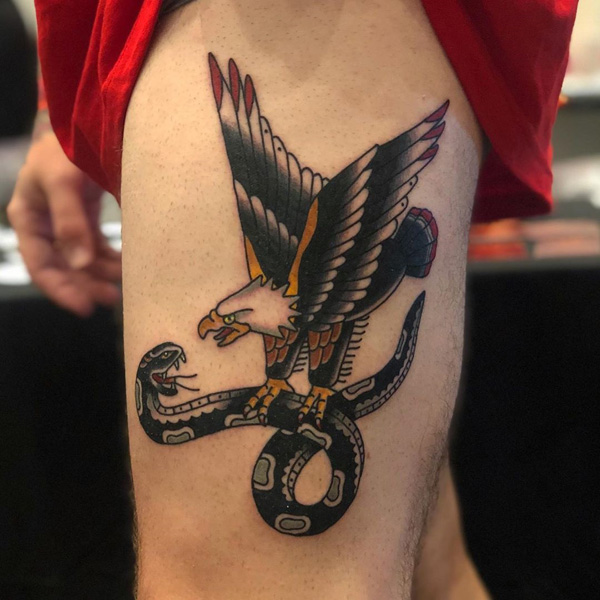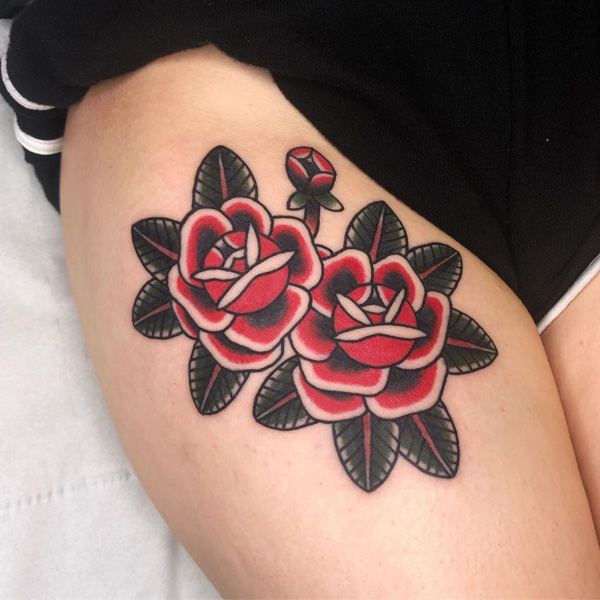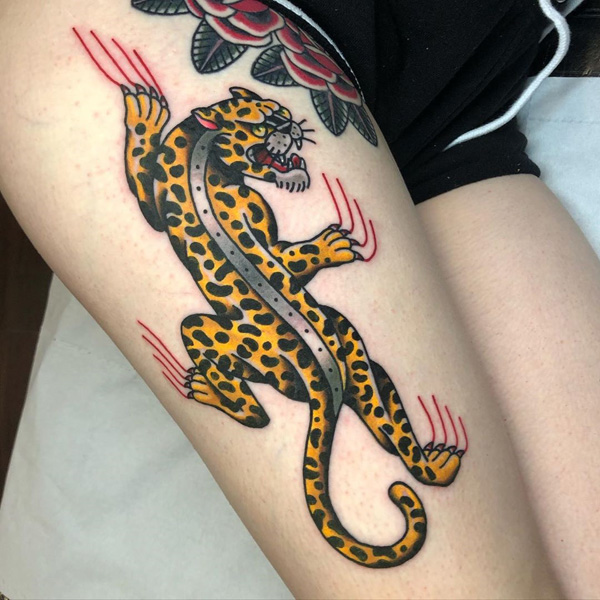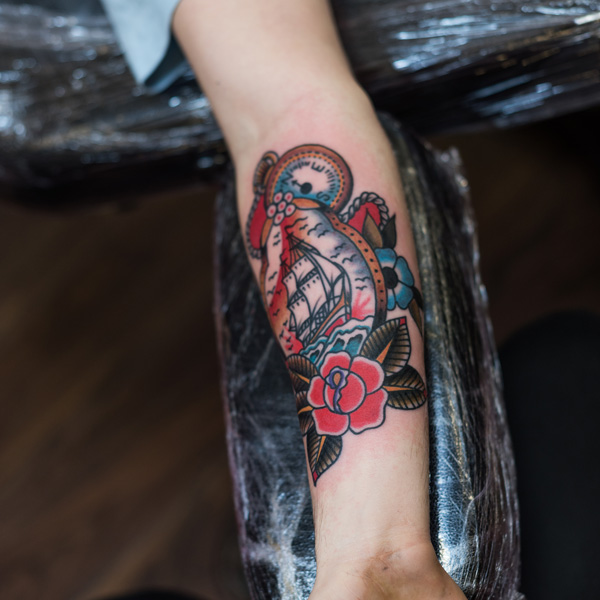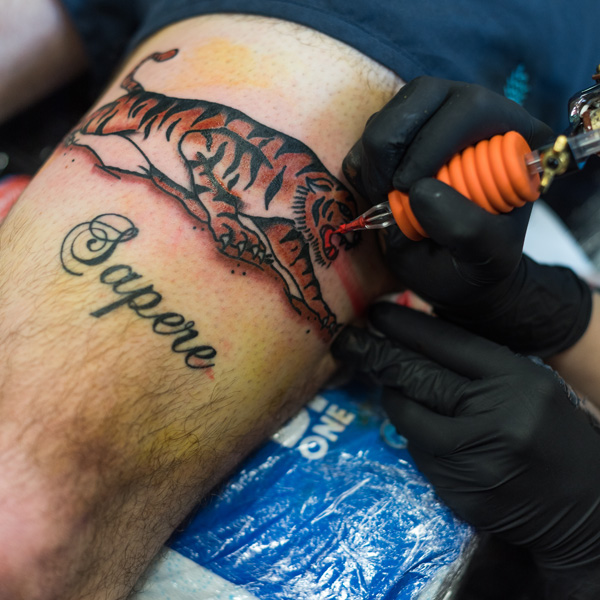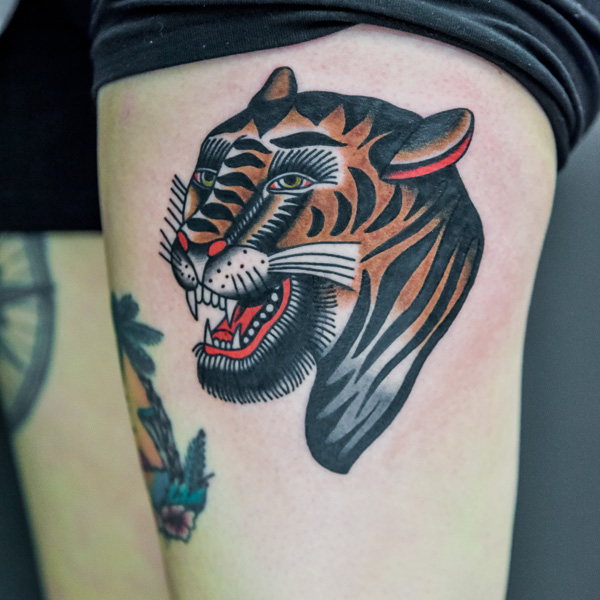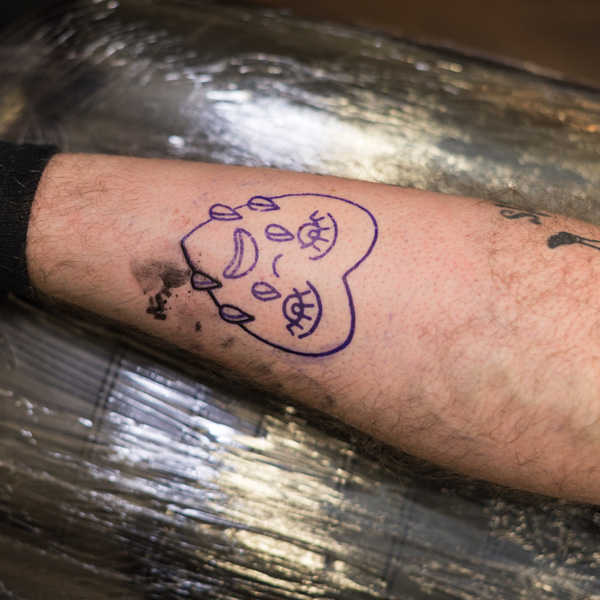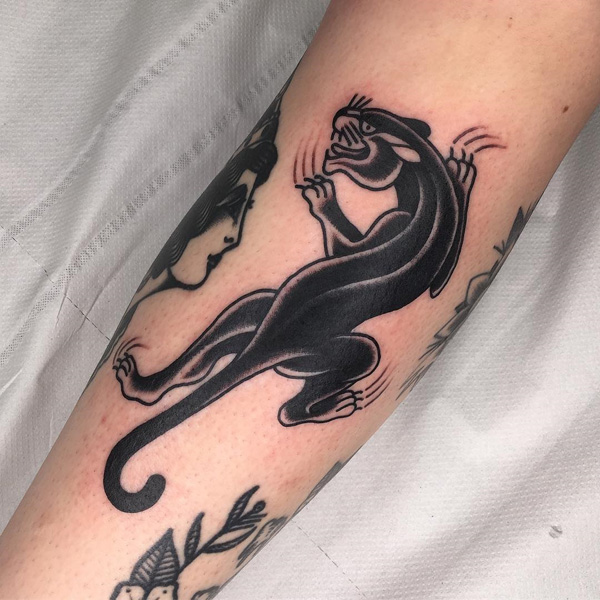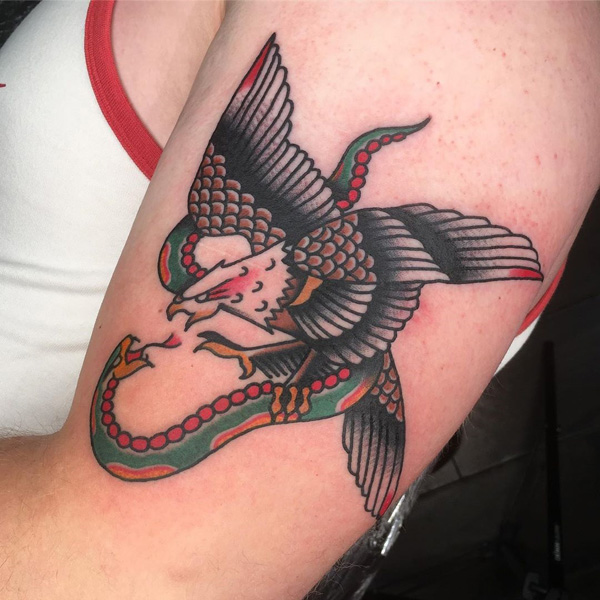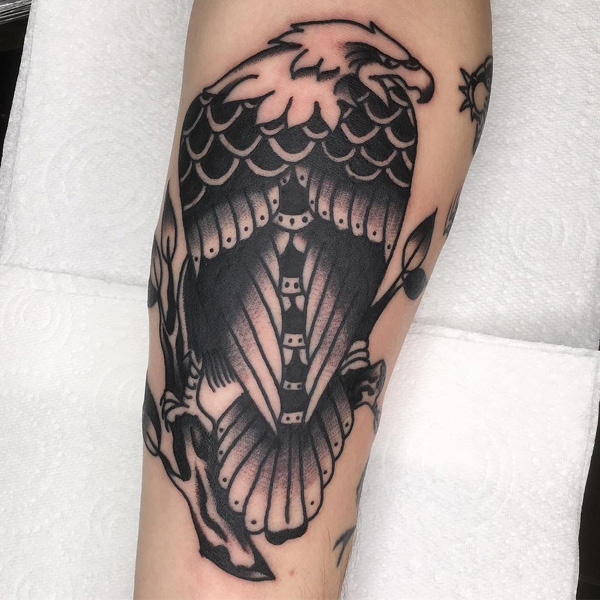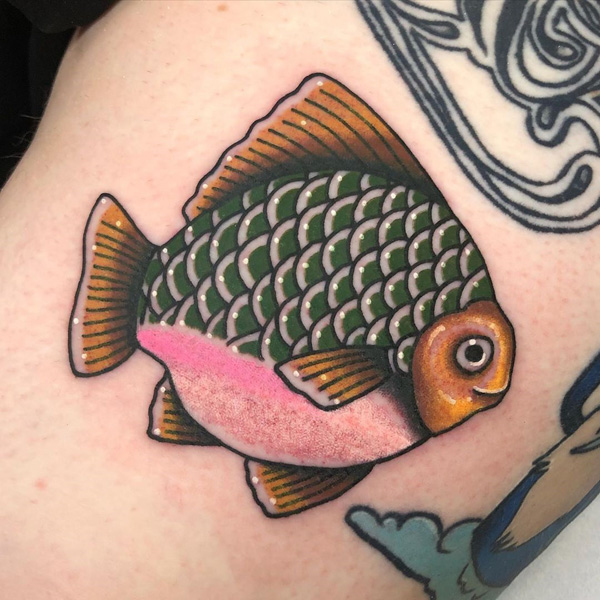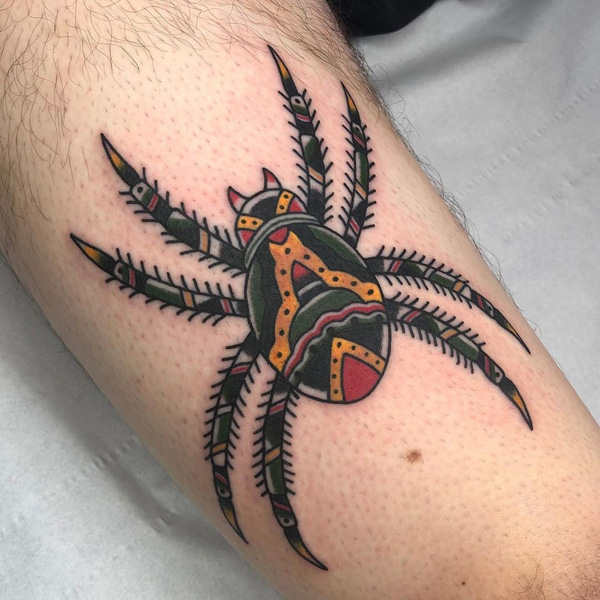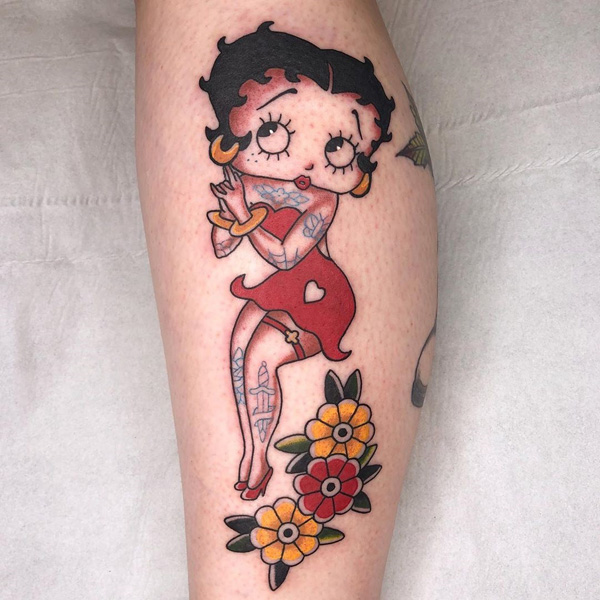Traditional Tattoos
Traditional tattoos are defined by thick, clean lines that round out bright, solid-coloured shapes that often have a symbolic meaning. It’s a style that has evolved in various different ways, being updated with the times while still keeping that homage to the original look. For this article we’ll be talking about what are referred to often referred to as ‘Old School Tattoos’, which might seem more restrained in colouring and appearance than more modern developments in the style, which can be termed Neo-Traditional.
Traditional tattooing came into being just at the point when major differing cultures were beginning to sync, via an emerging commercial trade system that brought more and more diverse peoples into contact with each other. As sea voyagers mixed in vibrant port cities, a rich array of tattooing symbols became a way of efficiently sharing personal information. Swallow tattoo meant that someone had racked up 5000 nautical miles of travel; a turtle if you’ve crossed the equator; a dragon after docking at a Chinese port; nautical stars to represent the North Star and guidance when on a journey; and pin up girls, well, as a reminder of feminine beauty during time spent away at sea.
While Traditional tattooing nowadays doesn’t involve rigid definitions like the above, the likes of swallows and turtles and other animals that tend to travel far away from their nest can become important symbols for people who have left their place of home in search of opportunity.
Anchors are maybe one of the most enduring of images within Traditional tattooing. They’re a quick and handy reference point for the virtues of solidity. Originally these were accompanied with the name of a loved one, often combined with a heart image. They’re still very much popular today for this reason, as a visual reminder of those who’ve got our back.
For most people, Traditional tattoos are synonymous with Norman Keith “Sailor Jerry” Collins, a figure who epitomises this unique moment in time and this blending of cultures. Joining the US Navy while still young, Jerry travelled through Polynesian islands in the late 1920s and developed a love for the craft of tattooing and all the subtle meanings stored within different images. Soon enough, he’d opened his own pioneering studio in Hawaii – home of the US Pacific fleet and many a potential customer – and over the years refined his signature style which holds such a special place in tattooing history today. Sailor Tattoos continue to be a big part of tattooing culture due to their rich history.
Traditional tattooing inspires perhaps more devotion that most other tattoo styles: many people who are diehard Traditional fans don’t get inked in any other style. Though it might seem more limited than other approaches to tattooing – its range of symbols is narrower than others – Traditional tattoos fans arguably boast a sense of togetherness unlike that seen in most other styles. There’s an intense familiarity at play in the shared layers of meaning that have grown over time.
In this way, Traditional tattoos are a real “tattoo lover’s tattoo”. Perhaps what makes Traditional tattoos so appealing and fun is that they’re a constant nod to the moment tattooing really took on a life of its own in Western culture: they mark the point when popular culture as we know it began to develop a shared understanding, and Traditional stands as testament to the ways in which tattooing culture formulated its very own language that would be spread far and wide, across ports and borders all around the world.

